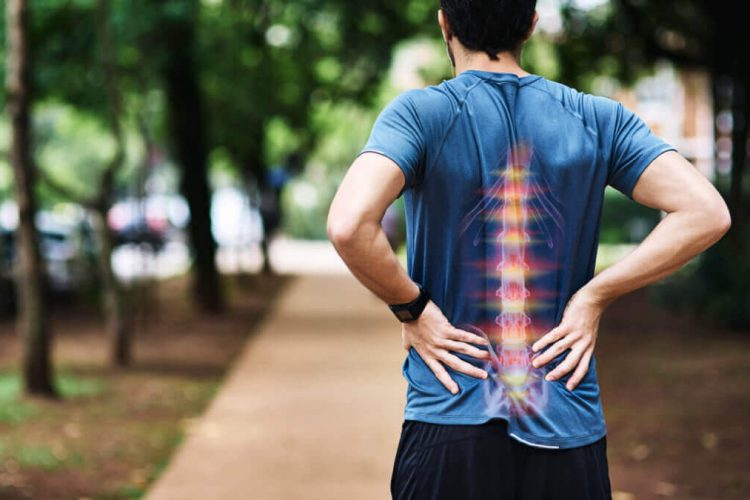
Herniated discs

Back pain is a common, recurring problem throughout the population. There are many causes, but we often hear about herniated discs.
What is a herniated disc?
Before explaining what a herniated disc is, it is important to understand the structure of our vertebral column. We have 24 vertebrae (7 cervical, 12 thoracic and 5 lumbar) in addition to our sacrum at the base. Between each of these vertebrae there is a small, flexible cushion that helps us absorb shocks in the spine and distribute impacts when we move. These are the intervertebral discs. The center of these discs contains a rigid nucleus that is involved in a herniated disc.
Herniation occurs when there is a tear in the wall of the intervertebral disc that allows the nucleus to protrude to the outside of the disc. Because our discs are only partially innervated, there may or may not be pain in the injured area.
What causes pain to radiate to the arms or legs?
Referred pain in your limbs usually happens when the hernia pushes out into a nerve root and irritates it, which causes pain along the path of the nerves formed by the affected root. This is called a radiculopathy. However, not all herniated discs cause pain and they are not the sole cause of radiating or referred pain in other parts of the body. Facet joints and myofascial conditions can also produce similar symptoms. So be careful not to jump to conclusions. A bulging disc with no tear can also result in symptoms like those of a herniated disc.
Here are some tips to reduce the risk of a herniated disc:
- Use good posture when engaged in physical effort and sports.
- Do not lift loads heavier than what you can handle.
- Avoid twisting your lower back when carrying a load.
- Adjust your work desk so that you are properly seated.
Remember that a herniated disc is not necessarily synonymous with pain and that it is possible to eliminate the symptoms associated with the phenomenon.
The physical therapists at Physio Atlas are also available as needed to help you with back and other pain. Feel free to contact us if you need something!


